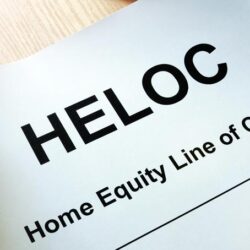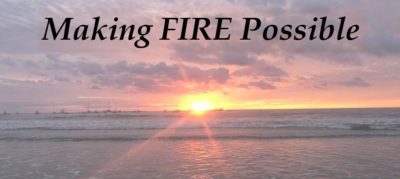With the upcoming tax season comes the inevitable reckoning with our numbers and seeing how we are doing with our businesses, mutual fund accounts and investing in real estate.
We had no new acquisitions but still had six real estate closings in 2019! We did a cash-out refinance on our Florida duplex to pay back a private loan we took from a friend. We also sold our entire portfolio in Indianapolis which was more effort for less result than we targeted. We are now at 11 properties and not necessarily looking to buy more just for the sake of activity.
In fact, it is easier to think of how not to invest in real estate because it seems like there is a lot of money chasing very thin deals.
That said, there are three trends that I am following for the new year and beyond. We don’t bet on trends outright, like a fashionista might buy clothes to follow a fad. But we do look at changes in demographics, consumer behavior, economic activity, etc. to get ideas for where we might invest or what type of investment to make. Besides, these trends have particularly fun names:
- Instant Buying
- Hipsturbia
- The Tireless Mover, Globetrotter and other retirement prototypes
Instant buying, or i-buying, adds much-needed liquidity to real estate investing.

One big disadvantage of real estate to other types of investments is that holding property is more illiquid – i.e., it’s harder to get your money out of the investment once you are invested.
Sure, you can sell your property, but if it’s a down market for your neighborhood, you could get stuck. You can refinance and pull money out of the property, but if you really need the money then you’re probably not a strong candidate for a refinance and may get declined. You can rent out your property and get some money in the meantime, but it will be a very small percentage of your money that you can get out that way. Real estate is not the place to hold your money if you think you may need to get it out quickly.
Instant buying takes some of the uncertainty out of selling real estate. I-buyers are companies that will buy homes outright direct from the owner. Zillow has an instant buying service, and Redfin is testing the offering. I-buyer Opendoor raised an additional $300 MM for a $3.8 Bn valuation. Just this week, one of the business newsletters featured i-buyer, Orchard, landing an additional $36 MM in funding. This is a trend with momentum.
The appeal to property owners is clear. If you are looking to sell your home to buy something else, you can control the selling part of the equation by going with an i-buyer, and then you know what you can sell for and when you can close. This makes it much easier when you buy your next property to know how much you can spend and how much time you have to look.
I don’t think we could have used an i-buyer for our Indianapolis portfolio because all the homes had tenants in place, so we were looking for a buyer who wanted rentals. I-buying is thus far focused on buying homes to sell. However, we did look into Roofstock, which is an online platform to buy and sell investment real estate specifically. The online marketplace for real estate is here to stay and will only expand.
We may consider using an i-buyer if we ever divest our Florida rentals. We are living in one of our rentals now, as we make Florida our primary residence over New York. Taking over a rental made our move here very easy, as we had a property we knew in an area we knew and could plan our move-in date around when the lease would end. If we wanted to sell the rental we are living in now, we could take over another rental when the lease ends there and sell this one to an i-buyer. Rinse and repeat for each of our Florida rentals.
Of course, there is a price to going the instant buying route rather than the traditional sale through a real estate agent. Homes sell for less on average when you sell to an i-buyer than if you sell through a traditional agent. That said, i-buying provides an additional option to sell, which means more liquidity. More liquidity takes some of the risk out of owning real estate, and that’s a net positive.
Instant buying increases the appeal of owning real estate, which makes the market more competitive for us if we’re looking to buy, but also increases the pool if we’re looking to sell. I’m not sure how it will impact our investments, as it depends on whether we’re buying or selling. But I like the idea of more liquidity in real estate, so I’m glad the i-buyers are here.
Hipsturbia points to where the next good US real estate investment might be

Another thing that helps liquidity is having a large population of buyers, and this means you need to pay attention to big demographics like the Millennials, who at 75 MM strong in the US, represent 30% of the population. Apparently, Millennials are moving to Hipsturbia.
I first saw the term Hipsturbia, in a Bigger Pockets piece on why investors should look at suburbs that are near cities over the cities themselves (Brooklyn v. Manhattan was one of the examples). Hipsturbia captures the migration of Millennials away from cities for nearby suburbs in search of affordability, less traffic and overall better work/ play balance. We’re Gen X, but made a similar move when we left Manhattan for the Bronx five years ago – affordability was certainly a factor, as the money we save plays a critical factor in supporting our FIRE lifestyle.
Hipsturbia is not the quiet type of suburb, but an active, vibrant community near a city. This demographic choice seems to be an extension of the creative class idea forwarded by Richard Florida 15 years ago. The critical mass of creative professionals (e.g., knowledge workers, artists, makers) is linked to the rise of specific regions like Silicon Valley in California, the research triangle in North Carolina and cities like Portland, Austin, and Denver. We picked Asheville as our first real estate investment because we identified a strong creative class there.
The major cities are very crowded and very expensive. With climate change and sustainability front of mind for many people, I see Hipsturbia as more than a fad but a long-term choice. We picked Jacksonville because of its urban/suburban offerings, as well as the Riverdale area of Bronx, NY, though we didn’t know of the Hipsturbia term at the time.
We loved our recent trip to Arizona and saw several cities there that would fall into the Hipsturbia category. We even briefly looked at an investment in Phoenix, but don’t know the area well enough and have the bandwidth right now to explore so far from home. Still, a Hipsturbia location like some of the places we visited in Arizona is a good way to characterize where we would look to invest if we do pick another geography in the US.
The Tireless Mover, Globetrotter and Never Retired suggest the next good real estate investment may be abroad

Aside from the Millennials, the other big demographic to pay attention to are the Boomers, age 55-75, so at retiring or soon-to-be at retirement age. An interesting piece by Kiplinger magazine outlines nine retirement types, and many of the profiles suggest that Boomers would be a target for going abroad. One of the reasons we picked Costa Rica is because it is a popular retirement option, so could see a ready pool of buyers or long-term renters, if we decide to shift from our vacation rental focus.
The nine retirement types are not about real estate specifically but suggest that international locations fit what today’s retirees want and need:
- The Tireless Mover is the active retiree. With money to spend and adventures to find, international rentals would be appealing to this group
- The Lost don’t have a post-retirement plan. International locations, where you can get away from it all, are great for soul-searching.
- The Workhorse never wants to retire. There are many underdeveloped international possibilities ripe for the entrepreneur or career changer looking to do something new. Or, with the increase of remote work, you can continue your career on the beach (or the mountaintop or the jungle) abroad.
- The Lonely retire alone. Moving abroad is a great way to start over.
- The Globetrotter wants to see the world. These are prime vacation rental customers.
- The Reluctant Spender is afraid to deplete their savings. Relocating to a low-cost geography abroad would enable that nest egg to stretch
- The Superhero wants to give back. There are many opportunities in developing countries to work on human services, in eco-rich regions to work on sustainability, in biodiverse regions to work on animal welfare, etc.
- The Overly Generous spend a lot on kids and family. What better way to spoil the kids than a vacation abroad?
- The Never Retired continue to work because they have to. With the increase of remote work and the lower cost of living abroad, an international relocation may be the best opportunity to catch up.
======
Costa Rica would check all the boxes above. However, we already have three properties there and don’t want to overly concentrate on any one region. We are looking at picking a new geography with the above criteria in mind. People are living longer, so retirements are longer. Traveling abroad and relocating abroad are just going to increase over time.
What real estate trends are you following?


 We are Scott and Caroline, 50-somethings who spent the first 20+ years of our adult lives in New York City, working traditional careers and raising 2 kids. We left full-time work in our mid-40’s for location-independent, part-time consulting projects and real estate investing, in order to create a more flexible and travel-centric lifestyle.
We are Scott and Caroline, 50-somethings who spent the first 20+ years of our adult lives in New York City, working traditional careers and raising 2 kids. We left full-time work in our mid-40’s for location-independent, part-time consulting projects and real estate investing, in order to create a more flexible and travel-centric lifestyle.  Financial independence and early retirement is not something we originally focused on, but over time realized it was possible. Our free report,
Financial independence and early retirement is not something we originally focused on, but over time realized it was possible. Our free report, 








Interesting and informative post! These are all on our radar too. I’m trying to figure out something in a 3hr driving radius as I think self-driving cars might speed up drive times over the long haul. While most people want to leave colder climates… I’d love to Summer in a cooler location, like Maine or Vermont…and Winter somewhere else. Thanks for taking the time to put this together.
Yes and yes to your points on self-driving and cooler locations! I read a real estate piece (I think in the NY Times) about how self-driving cars might make the suburbs near NYC even that much more desirable. I think that will be true for many parts of the country. Regarding the cooler locations, I think these areas will be desirable because of climate change raising temperatures. Great points!
“Hipsturbia” – this is the first time I’ve heard this term but it certainly fits the trend I am seeing from almost all my friends back home in Michigan.
My medical office building portfolio is certainly taking the Boomer demographics into consideration. Seems like a pretty solid long term investment : )
Happy 2020 guys!
Max
Thanks for reading, Max! I pinged you privately about your medical office portfolio — I’m intrigued!